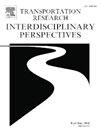Unlocking telecommuting patterns before, during, and after the COVID-19 pandemic: An explainable AI-driven study
IF 3.9
Q2 TRANSPORTATION
Transportation Research Interdisciplinary Perspectives
Pub Date : 2024-10-15
DOI:10.1016/j.trip.2024.101244
引用次数: 0
Abstract
The COVID-19 pandemic has instigated a global paradigm shift in employment practices, precipitating a widespread transition to telework. While past events had no long-lasting effect on the continued working conditions of the population, it is unclear what a prolonged need for telecommuting on such a nationwide scale would continue to have on the working population. This study uses an explainable artificial intelligence approach to investigate the changes in those telecommuting across three periods: i) pre-pandemic, ii) pandemic, and iii) post-pandemic periods. Machine learning methods, including decision trees, random forest, extreme gradient boost, naïve Bayes, and artificial neural networks, were developed across the study periods. Shapely Additive Explanations, a model-agnostic approach, explains the best-performing model for each period. Results show that before the pandemic, gender and occupation were major determining factors of telecommuting adoption. However, the pandemic reduced the impact of these factors, making income and education levels a more significant factor for identifying telecommuters. Additionally, the study examines interaction effects between these features, allowing for a deeper investigation of specific aspects of interest. These insights can be instrumental in shaping policies surrounding telecommuting as the pandemic gradually subsides. By understanding the changing dynamics of telework, decision-makers can better support and adapt to the evolving needs of the working population.
揭示 COVID-19 大流行之前、期间和之后的远程办公模式:可解释的人工智能驱动研究
COVID-19 大流行引发了全球就业模式的转变,促使人们普遍转向远程办公。虽然过去的事件并未对人们的持续工作条件产生长期影响,但目前尚不清楚在如此全国范围内对远程办公的长期需求会对工作人群产生怎样的持续影响。本研究采用可解释的人工智能方法,调查了远程办公在三个时期的变化情况:i) 大流行前;ii) 大流行;iii) 大流行后。机器学习方法包括决策树、随机森林、极端梯度提升、天真贝叶斯和人工神经网络,这些方法都是在研究期间开发的。Shapely Additive Explanations 是一种与模型无关的方法,用于解释每个时期表现最佳的模型。结果表明,在大流行之前,性别和职业是采用远程办公的主要决定因素。然而,大流行降低了这些因素的影响,使收入和教育水平成为识别远程办公人员的更重要因素。此外,该研究还考察了这些特征之间的交互效应,从而可以对感兴趣的特定方面进行更深入的调查。随着大流行病的逐渐消退,这些见解将有助于制定有关远程办公的政策。通过了解远程工作不断变化的动态,决策者可以更好地支持和适应工作人群不断变化的需求。
本文章由计算机程序翻译,如有差异,请以英文原文为准。
求助全文
约1分钟内获得全文
求助全文
来源期刊

Transportation Research Interdisciplinary Perspectives
Engineering-Automotive Engineering
CiteScore
12.90
自引率
0.00%
发文量
185
审稿时长
22 weeks
 求助内容:
求助内容: 应助结果提醒方式:
应助结果提醒方式:


